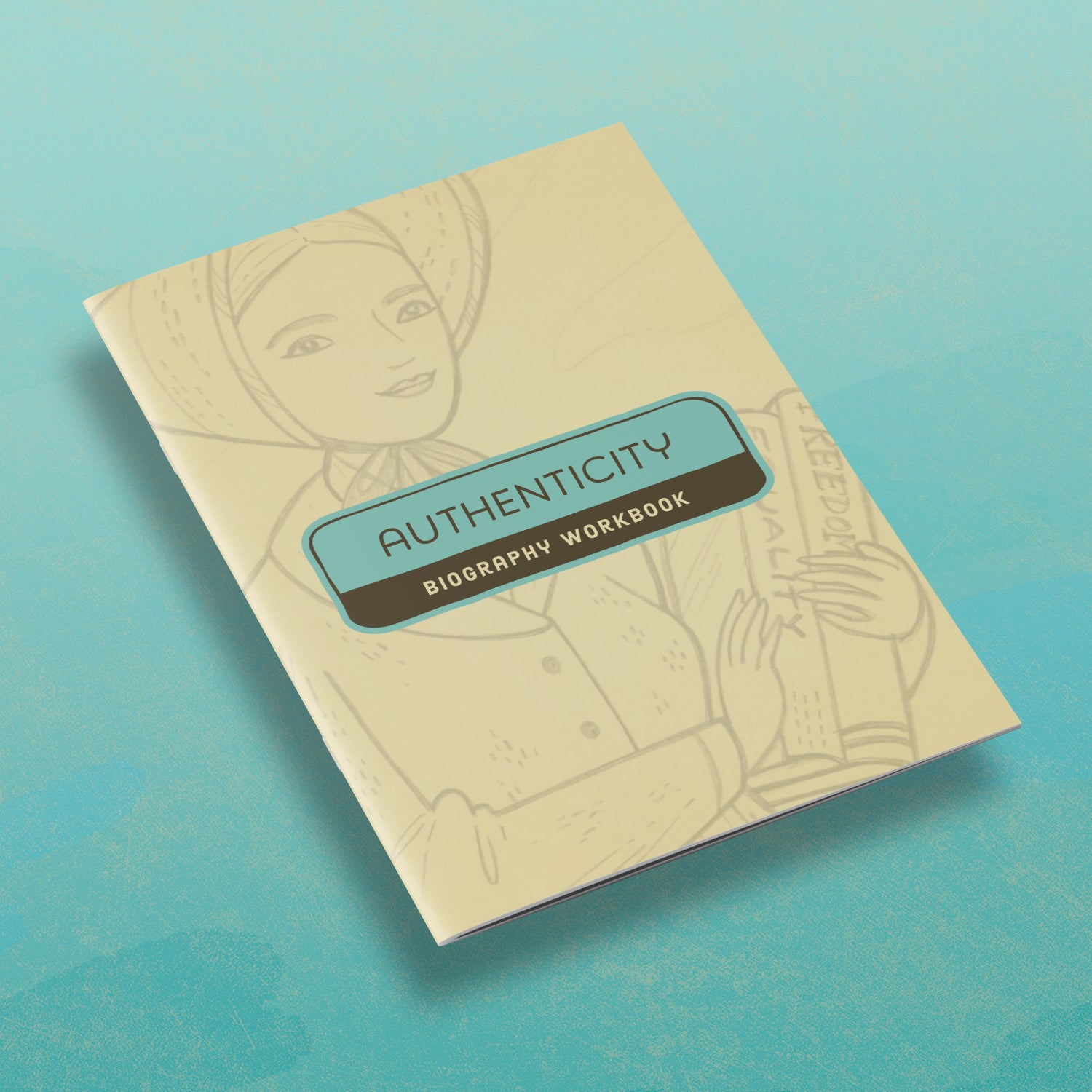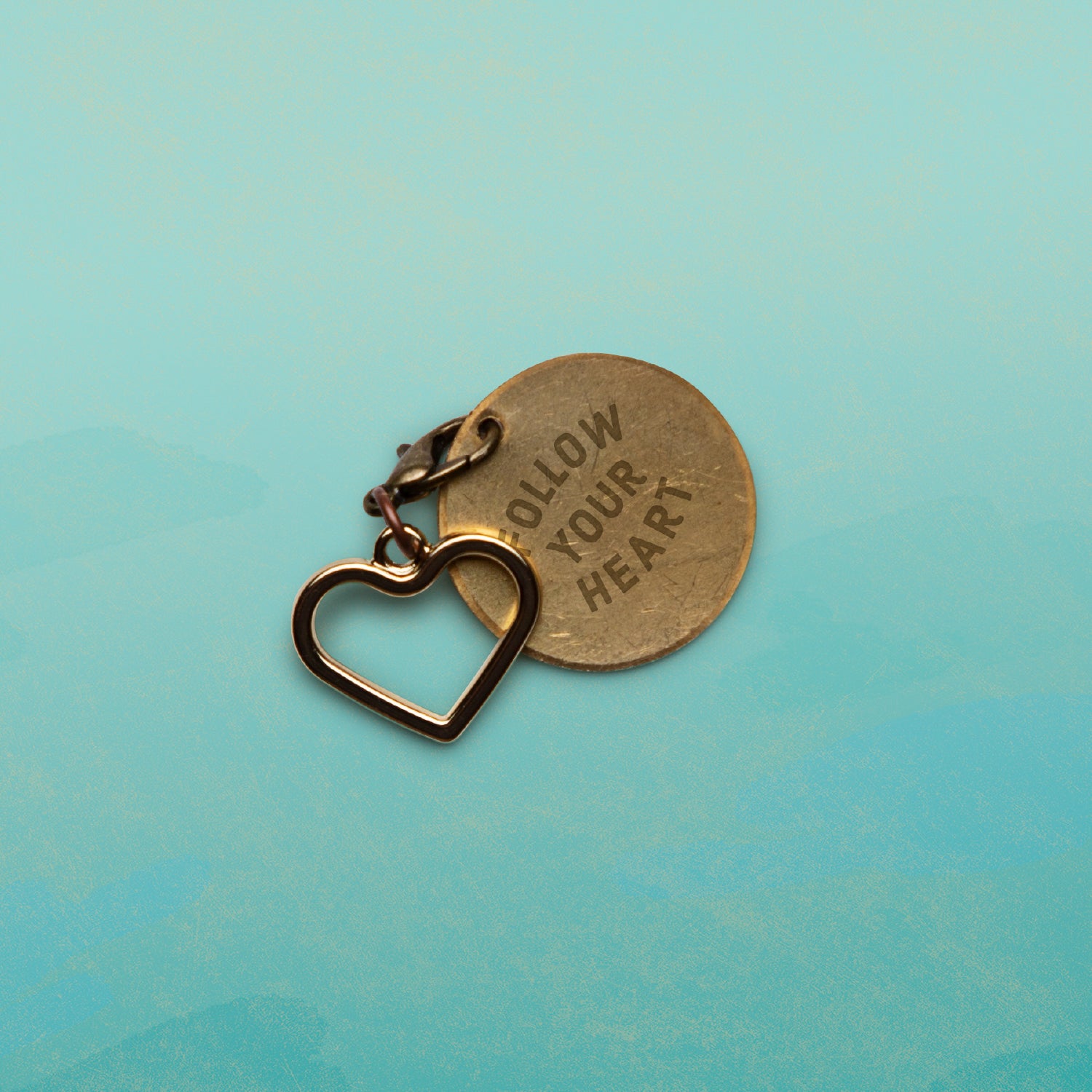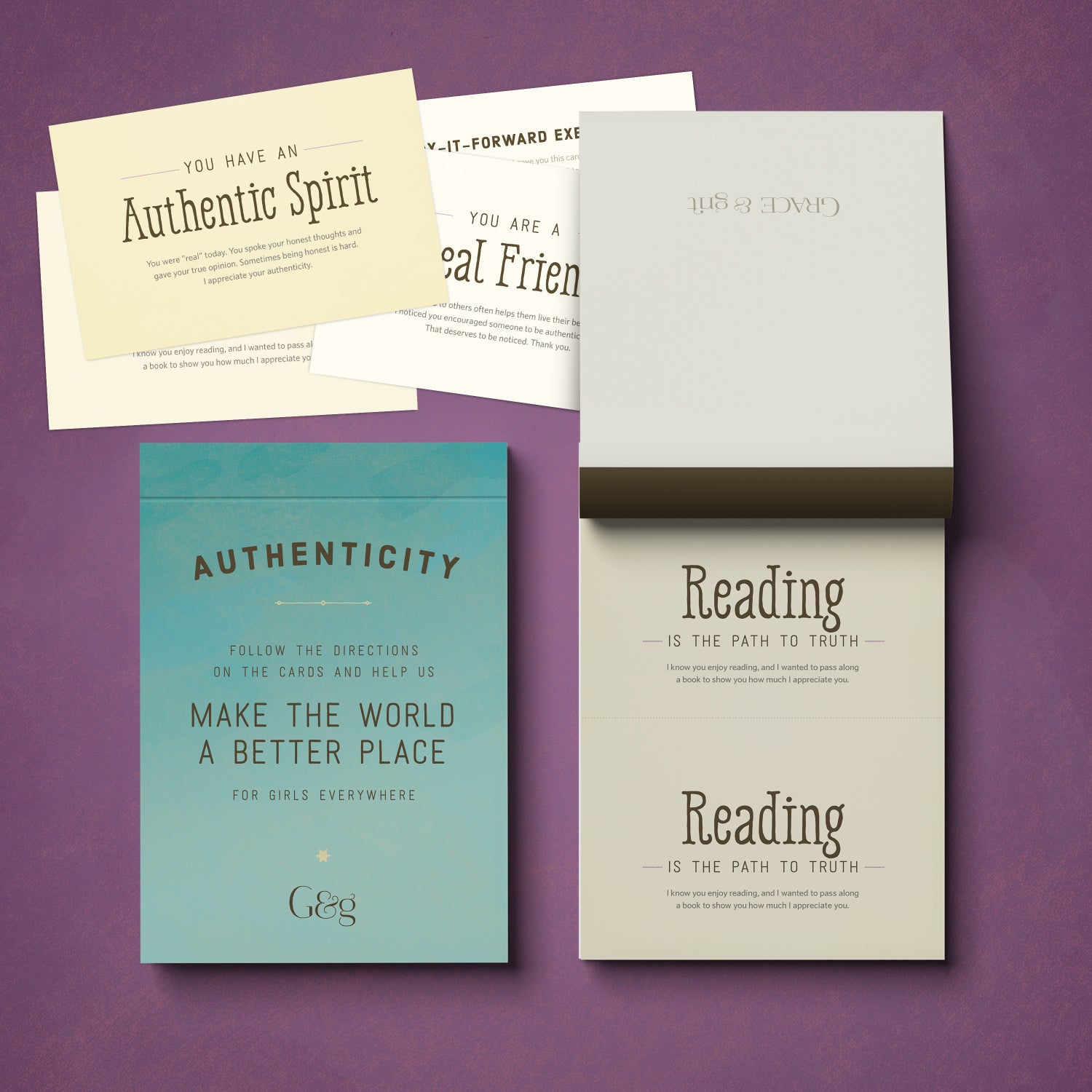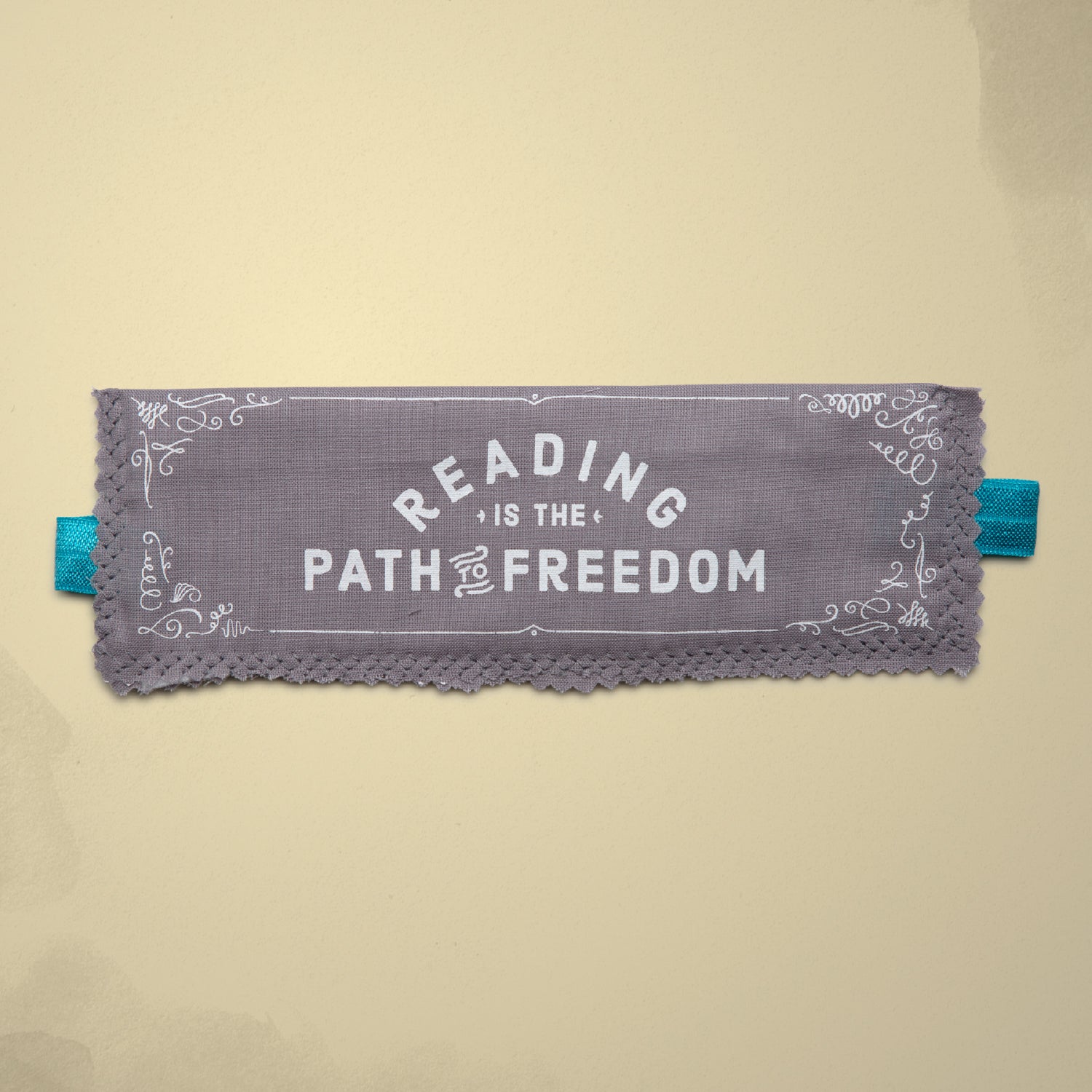Authenticity means the act of being genuine. Showing up as your authentic self can be hard sometimes. However, it is an important lesson to learn early on in life. This lesson gives the real-life example of a woman who decided to honor her values and beliefs. It helps girls understand the importance of authenticity and how to incorporate this character trait into their lives and relationships.
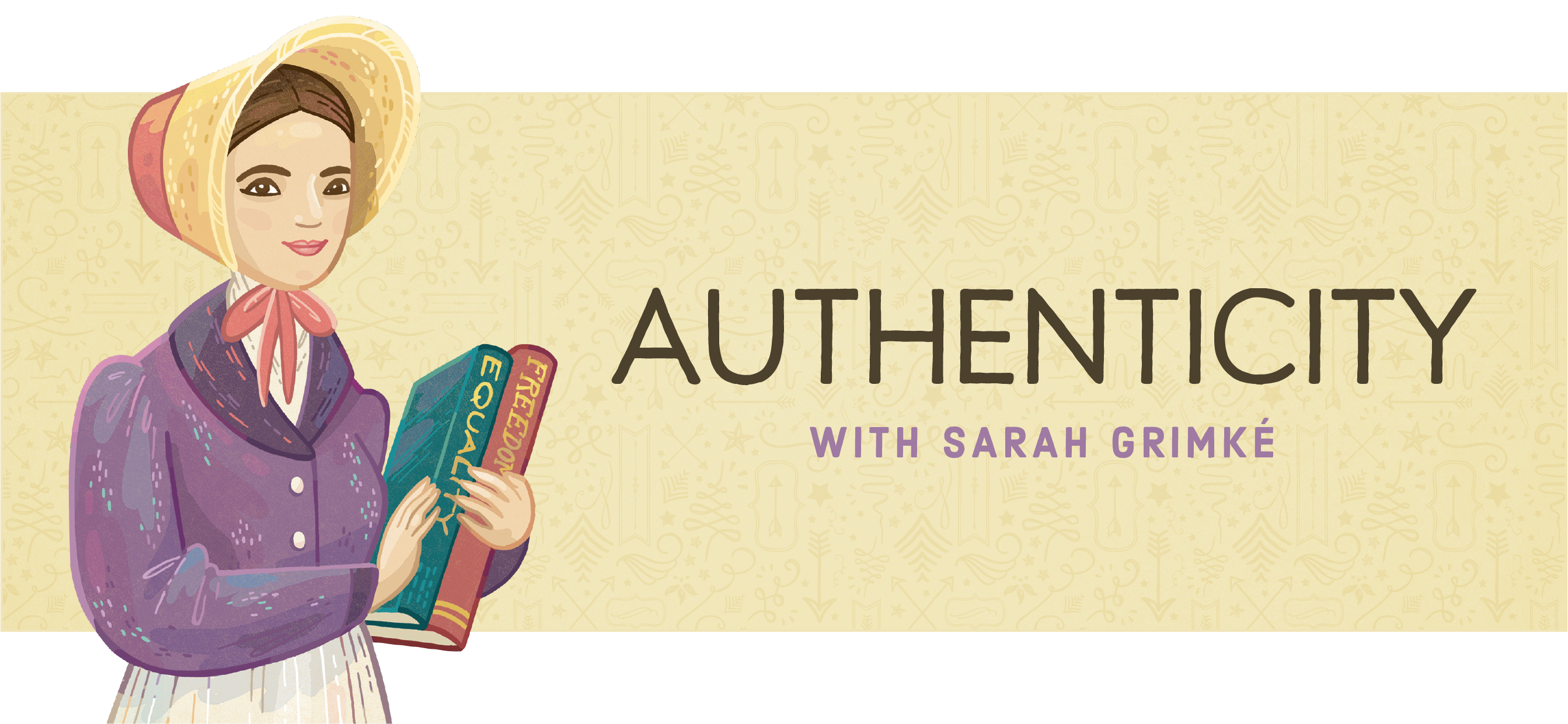
Section One
Preparatory Reading
Intro From Heather: Why Sarah Grimké
In June 2016, we launched our first-ever Nominate Her Challenge. We asked girls to submit their videos about women who have inspired them. The video that was chosen would be our 10th Grace & Grit lady. The girl with the chosen submission would get to help us design the box, charm and accessory, write blogs and help us launch! The submission that was chosen: abolitionist and women's-rights advocate Sarah Grimké.
Coincidentally, I had just read about Sarah in the book “The Invention of Wings” by Sue Monk Kidd. Although parts of the book were given dramatic license, I felt like I had learned a lot about Sarah, so when she was presented as a choice for our 10th woman, I considered it an honor to introduce her spirit to the Grace & Grit team. I felt like we were old friends. Sarah presents as a timid character in history, but the moral and ethical struggles she tackled in her lifetime refined and sharpened her authenticity.
Sarah was born in 1792 on a plantation in the South. Her family enslaved many people. Sarah realized early on in her life that slavery was wrong, and her opinion on this matter flew in the face of her family, friends and community. Every aspect of Sarah’s life—and the life she knew as a citizen of the South—was built on the backs of enslaved people, and it was something she could not tolerate.
She tried to change her sphere of influence. She tried to teach enslaved people to read, only to be punished by her father. She tried to free the maid her parents gave her in her pre-teen years, only to be told she could not do so.
As she was trying to reconcile the horrors of slavery, she started to realize the limited rights she had as a woman. She was troubled by her parents’ refusal to let her learn math and science because it was not “womanly.” She was disappointed that her life would not be her own because she was a woman.
The older Sarah became, the more she realized she was different from the world around her. She was trying to fit in with the Southern way of life, and it made her uncomfortable. When she had the opportunity to visit Philadelphia as an adult, she realized the North was where she belonged. It was a moral battle for her to try to be a part of society in the South, in the depths of slavery—and she could truly belong in the North, where slavery was not tolerated and where she would have the freedom to advocate for the emancipation of slaves and equal rights for women.
Sarah realized she had a similar mindset to the Quakers. This religious group believed in the equality of races and genders. Sarah realized that a life filled with fancy dresses, extravagant parties and decadent food felt wrong. So she literally stripped her life down to what mattered to her the most. She became a Quaker, giving up her wealthy lifestyle to speak her truth and shed light on the story of enslaved people in the South.
Sarah’s story is an example of grace and grit because she stood up for those who couldn’t stand up for themselves; she followed her heart to lead the life she wanted.
If we take Sarah’s life and bring it into the 21st century, it remains the same story—the tale of a girl believing in her own worth and standing up for those who are bullied or made to feel less important. Sarah was a girl like you, who just followed her heart, tapped into her authenticity and helped others find the freedom to do the same.
The Journey of Sarah Grimké's Life
Sarah’s life was a simple one, but very rich in service to others. Her fight for genuine equality is a golden thread that can easily be traced throughout everything she did.
1792
Sarah was born on November 26th in Charleston, South Carolina. She grew up on a Southern plantation, where she witnessed both the injustices against slaves and the inequality between men and women. Sarah wanted to study law, as her brothers had; however, she was restricted to learning things like watercolor and embroidery.
1804
By the time she was 12 years old, Sarah was spending Sunday afternoons leading a Bible study class for the enslaved people on her family's plantation. Frustrated Sarah knew they yearned to be literate, but her parents forbade her to teach the enslaved how to read and write.
1821
Sarah took permanent leave of her childhood home and moved to Philadelphia, where she focused on joining the Quakers’ Society of Friends.
1837
Sarah and Angelina appeared at the anti-slavery convention in New York and began a public speaking tour. They would discuss their views on abolition, speaking to full audiences as often as six times a week.
1848
Sarah, her sister and her sister’s husband established a boarding school out of their home. This first private venture led to the sisters’ careers as educators and administrators.
1861
The controversy over slavery incited the Civil War. Sarah supported the Union cause, and eventually, her and Angelina’s dream of abolition came true.
1868
Sarah became the Vice President of the Massachusetts Woman Suffrage Association.
1870
Even though it was illegal, Sarah led a group of women to Hyde Parkin Boston to vote in a local election.
1873
Sarah died on December 23rd in Hyde Park, Massachusetts.
To live an authentic life is one thing. To live an authentic life for the benefit of others is quite another. It requires immeasurable grace and even more grit. As Sarah’s life shows, adversity is hard to fight, but making space for your voice and the voice of the oppressed is always rewarding.
Character Trait: Authenticity
Authenticity. It can be scary because it makes us vulnerable, and it can make others feel uncomfortable.
How many times a day do you hide your true self? Several times each day, the opportunity may arise to state your honest opinion about something, but you become concerned about hurting someone’s feelings or worry that you won’t fit in with the group. So, instead, you deny yourself the opportunity to be authentic and pick the popular choice, share the most accepted opinion, give the easy answer. You cover yourself with a mask that you mistakenly believe fits you perfectly.
And how many of your friends are secretly relieved that you chose the easy response?
When we choose to wear masks and give easy answers, we choose to stop honoring our true selves and authentic friendships. After all, how can you be good friends with someone who doesn’t even know the true you?
Take off the mask and learn to become authentic.
Sometimes the world makes us believe that, for there to be harmony, we all must be the same. One color. Monochrome. If we are all the same, how can anyone judge us? Monochrome shelters us in our denial and gives power to the idea that judging the authenticity of others is acceptable behavior.
There is no texture to sameness; there is no focal point, nothing that is interesting or special. Life is boring. We are merely fitting in with each other. We tell ourselves we are free from the harsh judgment of others … as long as we are the same.
What happened to being authentic?
What happened to honoring the person and not the opinion?
What happened to looking for meaningful friendships instead of settling for easy acquaintances?
When one girl takes off the mask of pretense and says, “I don’t want to fit in here; I want to belong elsewhere. I want to become real,” she frees herself and others.
Somewhere along the path, we forgot that being authentic means no longer feeling the awkward confines of fitting in because we are now looking for our tribe—our people who honor the authenticity of others. Vibrant colors, textures and uniqueness come with authenticity. When girls believe themselves important enough to show their true selves, they believe themselves important enough to have true friends.
Girls, you deserve to be able to give the hard answer, the unpopular opinion, the choice that will make others think. You have the right to be you—genuinely, truly, authentically you. And you deserve to have friends who will appreciate that girl. Give them a chance to make her acquaintance.
Here’s the thing: When you free yourself to be authentic, you free yourself from judgment. Others’ opinions no longer trap you. You have found a higher plane to live on; you are soaring above. You are free.
Living an authentic life is a courageous act. Get to that life as soon as possible, women leaders of tomorrow. The sooner you get there, the better life is going to be.
Lesson Contents
Below are descriptions of each item we offer as part of the Authenticity Theme. Depending on your purchase, some of these may not be applicable.
- Illustrated Portrait
- Our portrait gives life to each of our sets. Sarah is pictured as her younger self in her pre-Quaker period. The books in her hands and the famed Liberty Bell in the background give life to the ideas of freedom and equality. Wearing a look of graceful peace, it almost seems she has finally found where she belongs for the first time in her life.
- Activity Booklet
- The Activity Booklet highlights the themes of Sarah Grimké's life. It gives an overview of her journey into authenticity and the legacy she left behind. The booklet includes six thought-provoking activities that guide the readers to apply the lessons of Sarah's life to their own. Girls will understand what authenticity looks, sounds and feels like. More importantly, they will understand how to be their own best advocate.
- Biography
- While the Activity Booklet highlights Sarah's story, the Biography gives a more in-depth telling of her life. The reader will learn about Sarah's childhood on a plantation in Georgia. It explains why she was denied a formal education, how she tried to free her help-maid and other enslaved people, her estrangement and eventual reconciliation with her father and how she and her sister became abolitionists and advocates for gender equality.
- Biography Workbook
- The Biography Workbook allows the reader to dive into the lessons Sarah's legacy teaches and apply them to their life. We took the same thought-provoking activities from the Activity Booklet and made them into a companion guide for the Biography. After completing the activities, girls will understand what authenticity looks, sounds and feels like. More importantly, they will understand how to be their own best advocate.
- Timeline Poster
- The Timeline Poster is an introduction to the life of Sarah Grimké. One look at it, and the reader can easily spot the milestones in Sarah's life. The adversity she encountered and how she navigated through it. From birth to death, Sarah's life led up to her becoming an abolitionist. The poster highlights her accomplishments and how she changed the course of history.
- Charm
- The charm is a reminder of Sarah's legacy. It symbolizes her leaving a life of physical comfort in the South to move North and become a Quaker. The G&G Charm is an outline of a heart attached to a disc that reads "Follow Your Heart." Sarah's heart led her to a more authentic life, where she could speak out against slavery and felt she finally belonged.
- Play-It-Forward Cards
- Using the Play-It-Forward Cards allows your girls to generalize the lessons they have learned about authenticity and Sarah Grimké. By following the directions on the cards, they will acknowledge those instances where they see Sarah's legacy of advocacy and authenticity in their community. This set of Play-It-Forward Cards also provides an opportunity to give the gift of literacy to another girl—both activities Sarah would heartily approve of.
- Accessory
- Sarah Grimké's Accessory is a gray bookmark. Gray symbolizes her time as a Quaker, while the bookmark exemplifies her love of reading. It represents so much about her desire for a formal education, her love for her father's library, her short teaching career and her attempt to teach enslaved people to read. For Sarah, reading was a way to free the mind from oppression.
- Charm
- The charm is a reminder of Sarah's legacy. It symbolizes her leaving a life of physical comfort in the South to move North and become a Quaker. The G&G Charm is an outline of a heart attached to a disc that reads "Follow Your Heart." Sarah's heart led her to a more authentic life, where she could speak out against slavery and felt she finally belonged.
Timeline Poster
Statement or Instructions:
Direct the girls to the timeline.
Take turns having the girls read each event on the poster.
Questions:
What historical events are you aware of during the 1800s?
After reading the timeline, what do you think is Sarah’s greatest accomplishment?
Activity Booklet (Question Section) Or Biography Workbook
Statement or Instructions:
Invite the girls to complete the activities in the back of the booklet and discuss their answers. This is the heart of the lesson. While some girls may not want to share their answers, please allow time for discussion and processing their answers. The objective is for the girls (when applicable) to apply lessons about the woman’s life and character trait to their own lives.
The following are the questions found in the Activity Booklet or Biography Workbook. They are meant to be answered independently by the girls in the booklet, but may be referenced as needed in the lesson.
Activity 1:
Sarah’s values and belief system were very different from the majority of her family and community members.
Sometimes being authentic is really hard, especially when your choices are different from everyone else’s.
Do you sometimes pretend to be someone or something other than who
you are? Why or why not?
How do you feel when you pretend to be someone or something that you are not?
Activity 2:
Sarah knew that as long as she stayed in the South, she wasn’t living an authentic life. She wanted to find a place where she belonged.
While standing up for your beliefs may not always be a popular choice, it often makes you feel better than just “fitting in” with the crowd.
Describe a time when you stood by your beliefs. How did you feel?
Was it easy or hard to be authentic? Why?
Activity 3:
Sarah’s parents did not agree with her choices and beliefs. Even the people in Sarah’s town threatened her with arrest if she returned. However, Sarah didn’t become angry at her parents or the people threatening her.
Anger is a natural response when you feel hurt or when someone treats you unfairly. However, it is more effective to solve problems with calm wisdom rather than loud anger.
Why do you think Sarah chose not to become angry?
If you used grace instead of negativity when faced with those who think differently, what do you think would happen?
Activity 4:
Sarah dedicated her life to speaking out against slavery and speaking up for women’s rights.
Sarah lived a life of social justice and service.
If you could help anyone in the world like Sarah, whom would you help? Why?
Activity 5:
“I know nothing of man's rights, or woman's rights; human rights are all that I recognize.”
Advocating for others who do not have a voice or are silenced is an act of service.
Why is it important to advocate for those who can not advocate for themselves? How do we teach the world that everyone deserves acceptance and equality?
Activity 6:
Sarah and her sister were very close. Part of the reason their relationship was so special was that they were like-minded.
Which trusted adult woman in your life shares your same views and opinions?
Invite her to read Sarah’s story.
What did she learn from it?
What did she think of Sarah’s journey into authenticity?
How does she lead an authentic life?
Questions to deepen discussion (if time allows):
In your own words, describe what it means to be authentic.
Who do you know that is an authentic person?
Do you think it is hard to be authentic all the time? If yes, what is hard about being authentic?
What good things could happen if everyone chose to be authentic all the time?




